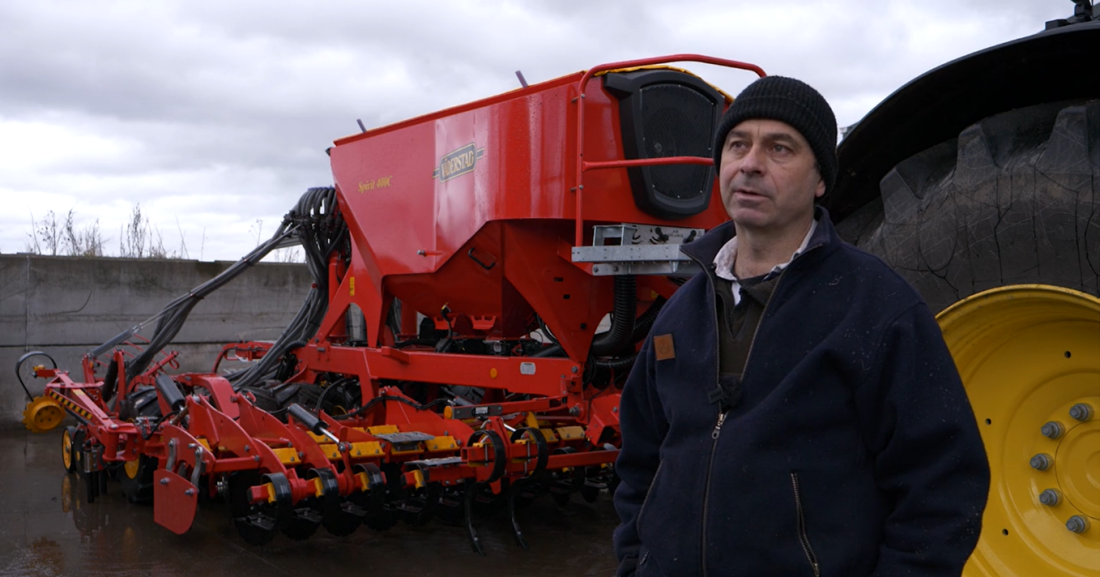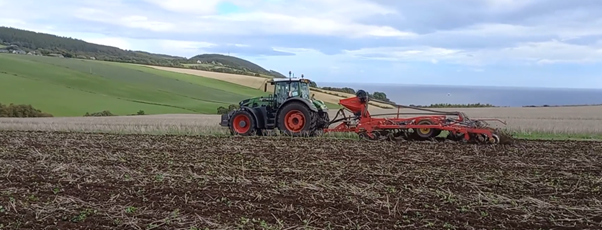Profiting from Reduced Tillage – Minimum Tillage at Rhynie Farm
10 April 2024Donald Ross farms in Easter Ross on Rhynie Farm. The farm is a 750-acre mixed unit, 400 acres under the arable rotation and the rest is permanent grassland. The farm runs 100 cows and 250 ewes. The farm has a mixture of soil types, from clay to blowing sand with it being predominantly sandy loams.
The farm grows winter wheat, oil seed rape, beans, and spring barley. With livestock enterprises putting pressure on time Donald has looked to min-till options to reduce the time and fuel intensive ploughing. Donald has experimented with min-tilling a range of crops in the past wheat, beans, rape, and a very small area of spring barley. Spring barley was the most challenging with it being so reliant on a good seed bed in the spring. Winter wheat has been more successful and approximately half of the wheat are on average is min tilled.
Soil is disturbed using one pass of a Watkins tri-till followed by sowing with a Vaderstad Rapid, which is a disc drill. The Tri-till combines two rows of cross cutting discs, with a front row of sub-soiler legs followed by a heavy packing roller. Donald favours the speed that the crop can be established with this method. In the short weather windows of the autumn this speed is crucial to successful establishment.

Only half of the wheat is min-tilled as there are challenges with grass weeds and sometimes compaction on the farm which means that the plough is the best course. Cattle are out-wintered on cover crops and following wet weather the compaction caused can be difficult to remove in a min-till system.
The most successful use of min-till has been in the establishment of oil seed rape. Several different min-till systems were used, such as tine and disc drills but losses were high with these systems. The use of a sub-soiler sower has worked very well, with a key point being that there is a packer behind the seed coulters to consolidate the seedbed.
Donald has also in the past established cover crops after harvest using the Vaderstad Rapid. Being able to get these crops established quickly is very important to getting a good establishment in the short window available after harvest. Although he has now moved on to broadcasting cover crops into the growing crop pre-harvest. The standing crop creates a micro-climate and acts as nurse crop sheltering and retaining moisture for the cover crop to grow. Being able to sow the crop ten days sooner than it would otherwise be also improves the success rate and takes the pressure off workload.

Three Tips for Minimum Tillage
- Compaction needs to be considered and managed
- Grass weeds can be a challenge, a control plan needs to be in place
- Make use of contractors where practicable before committing to machinery
Malcolm Macdonald, SAC Consulting
Further Information
Sign up to the FAS newsletter
Receive updates on news, events and publications from Scotland’s Farm Advisory Service
